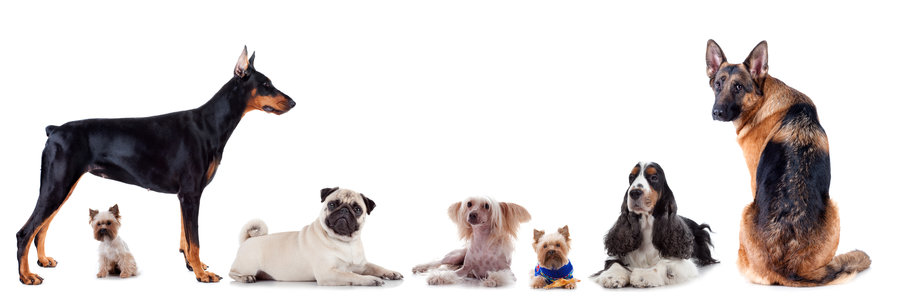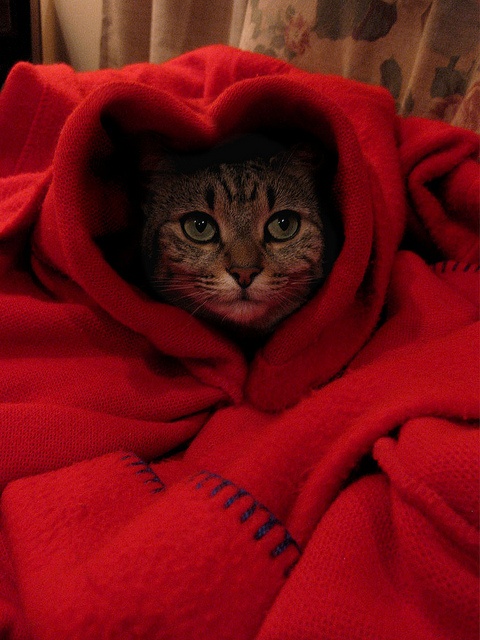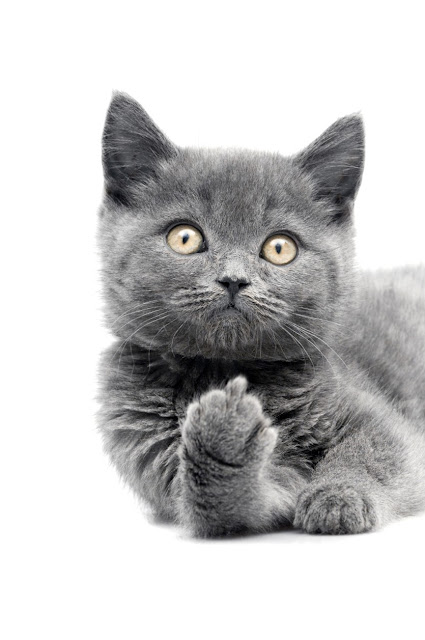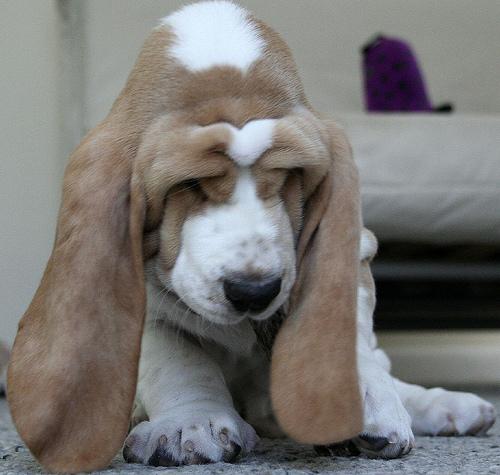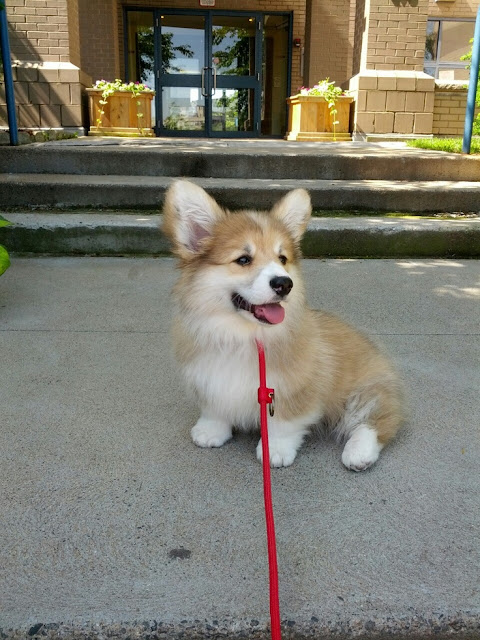Search This Blog
Saturday, August 31, 2013
Sunday, August 25, 2013
Appearance and size of cute dachshund
Appearance and size of cute dachshund :-
Appearance
A typical
dachshund is long-bodied and muscular, with short, stubby legs. Its front paws
are unusually large and paddle-shaped, for extreme digging. One dachshund was
known to have dug a 10-meter (33 ft) hole to catch its unsuspecting prey. Long
coated dachshunds have a silky coat and short featherings on legs and ears. It
has skin that is loose enough not to tear while tunneling in tight burrows to
chase prey. The dachshund has a deep chest that provides increased lung
capacity for stamina when hunting prey underground. Its snout is long with an
increased nose area that absorbs odors.
There are
three types of dachshund, which can be classified by their coats: short-haired,
called "smooth"; long-haired; and wire-haired.
Size
Dachshunds
come in three sizes: standard, miniature, and kaninchen (German for "rabbit").
Although the standard and miniature sizes are recognized almost universally,
the rabbit size is not recognized by clubs in the United States and the United
Kingdom, but is recognized by all of the clubs within the Fédération
Cynologique Internationale (World Canine Federation) (FCI), which contain
kennel clubs from 83 countries all over the world. An increasingly common size
for family pets falls between the miniature and the standard size, frequently
referred to as "tweenies," not an official classification.
A full-grown
standard dachshund averages 16 lb (7.3 kg) to 32 lb (15 kg), while the
miniature variety normally weighs less than 12 lb (5.4 kg). The kaninchen
weighs 8 lb (3.6 kg) to 11 lb (5.0 kg). According to kennel club standards, the
miniature (and kaninchen, where recognized) differs from the full-size only by
size and weight, thus offspring from miniature parents must never weigh more
than the miniature standard to be considered a miniature as well. While many
kennel club size divisions use weight for classification, such as the American
Kennel Club, other kennel club standards determine the difference between the
miniature and standard by chest circumference; some kennel clubs, such as in
Germany, even measure chest circumference in addition to height and weight.
H. L. Mencken said that "A dachshund is a
half-dog high and a dog-and-a-half long," although they have been referred
to as "two dogs long". This characteristic has led them to be quite a
recognizable breed, and they are featured in many a joke and cartoon,
particularly The Far Side by Gary Larson.Source link
Tuesday, August 20, 2013
Temperament of cute Basset Hound dog
Temperament of cute Basset Hound dog :-
The Basset
Hound is a short-legged breed of dog of the hound family, as well as one of six
recognized Basset breeds in France; furthermore, Bassets are scent hounds that
were originally bred for the purpose of hunting rabbits and hare. Their sense
of smell for tracking is second only to that of the Bloodhound. The name Basset
is derived from the French word bas, meaning "low", with the
attenuating suffix -et, together meaning "rather low". Basset Hounds
are usually Bicolors or Tricolors of standard hound coloration.
TEMPERAMENT
The Basset
Hound is a friendly dog, to people and other pets, and makes an excellent
companion for children.
Because
Bassets are scent hounds, they should always be on a leash when out on walks.
Although they are thought of as lazy, they have a tendency to run after prey,
so a leash is very important for their safety. Even though Bassets sleep a lot,
walks are still necessary.
Bassets are
known to be a vocal breed. They might howl or bark when they want something, or
to suggest that they think something is wrong. They also use a low, murmuring
whine to get attention, which sounds to many owners as though their Bassets are
"talking" to them. This whine is also used by the hound to beg (for food
or treats) and varies in volume depending on the nature of the individual hound
and length of time it has been begging.
Basset Hounds are extremely loyal to and very much
attached to their owners. They selflessly love their master, or someone whom
the hound patronizes (for example, children). This dog hates to be left alone
and owners should recognize that Bassets can be stubborn and provide gentle
correction where required. Bassets are highly social and are best situated as a
family dog with a large, fenced back yard.source link
Monday, August 19, 2013
Temperament of cute beagle dog
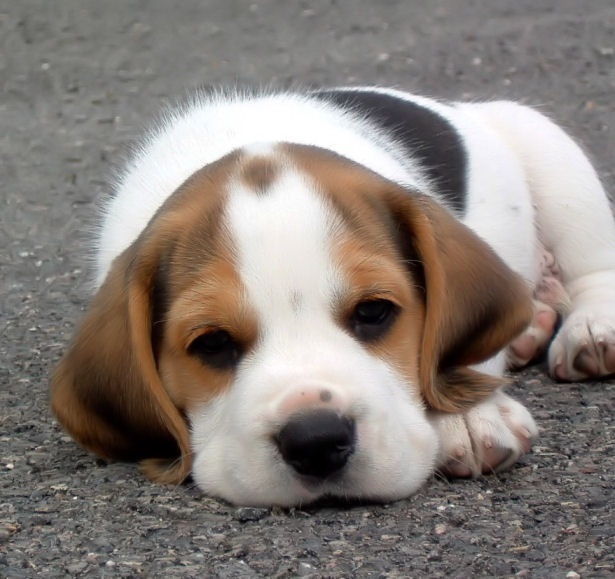
Temperament of cute beagle dog :-
The Beagle has
an even temper and gentle disposition. Described in several breed standards as
"merry", they are amiable and typically neither aggressive nor timid,
although this depends on the individual. They enjoy company, and although they
may initially be standoffish with strangers, they are easily won over. They
make poor guard dogs for this reason, although their tendency to bark or howl
when confronted with the unfamiliar makes them good watch dogs. In a 1985 study
conducted by Ben and Lynette Hart, the Beagle was given the highest
excitability rating, along with the Yorkshire Terrier, Cairn Terrier, Miniature
Schnauzer, West Highland White Terrier and Fox Terrier.
Beagles are
intelligent but, as a result of being bred for the long chase, are
single-minded and determined, which can make them hard to train. They can be
difficult to recall once they have picked up a scent, and are easily distracted
by smells around them. They do not generally feature in obedience trials; while
they are alert, respond well to food-reward training, and are eager to please,
they are easily bored or distracted. They are ranked 72nd in Stanley Coren's
The Intelligence of Dogs, as Coren places them among the group with the lowest
degree of working/obedience intelligence. Coren's scale, however, does not
assess understanding, independence, or creativity.
Beagles are
excellent with children and this is one of the reasons they have become popular
family pets, but they are pack animals, and can be prone to separation anxiety.
Not all Beagles will howl, but most will bark when confronted with strange
situations, and some will bay (also referred to as "speaking",
"giving tongue", or "opening") when they catch the scent of
potential quarry. They also generally get along well with other dogs. They are
not too demanding with regard to exercise; their inbred stamina means they do
not easily tire when exercised, but they also do not need to be worked to
exhaustion before they will rest. Regular exercise helps ward off the weight
gain to which the breed is prone.
Adorable cute Bengal Cat sitting
Adorable cute Bengal Cat sitting :-
The Bengal is
a hybrid breed of domestic cat. Bengals result from crossing a domestic feline
with an Asian leopard cat (ALC), Prionailurus bengalensis bengalensis.
The Bengal cat
has a desirable "wild" appearance with large spots, rosettes, and a
light/white belly, and a body structure reminiscent of the ALC. The Bengal
possesses a gentle domestic cat temperament, if separated by at least four
generations from the original crossing between a domestic feline and an ALC.
The name
"Bengal cat" was derived from the taxonomic name of the Asian leopard
cat (P. b. bengalensis), and not from the more distantly related Bengal tiger.
Appearance
:-
Bengal cats
have "wild-looking" markings, such as large spots, rosettes, and a
light/white belly, and a body structure reminiscent of the leopard cat.[1] A
Bengal's rosetted spots occur only on the back and sides, with stripes
elsewhere. The breed typically also features "mascara" (horizontal
striping alongside the eyes), and foreleg striping.
The Bengal cat
is usually either classed as brown-spotted or snow-spotted (although there are
more colours, brown and snow are the only colours of Bengal that the Governing
Council of the Cat Fancy (UK) recognize). Within brown Bengals, there are
either marble or spotted markings. Included in the spotted variation is
rosetted, which consists of a spot with a dark line surrounding it. Snow
Bengals are also either marble or spotted, but are also divided into blue-eyed
or Any Other Colour eyes.
The
International Cat Association recognizes several Bengal colours (brown, seal
lynx point, mink, sepia, silver) and patterns (spotted and marbled) for
competition. In the New Traits class, other colours may be shown, as well as
longhairs.
Temperament
and health :-
After three
generations from the original crossing, the breed usually acquires a gentle
domestic cat temperament; however, for the typical pet owner, a Bengal cat kept
as a pet should be at least four generations (F4) removed from the leopard cat.
The so-called "foundation cats" from the first three filial
generations of breeding (F1–F3) are usually reserved for breeding purposes or
the specialty pet home environment.
Since the late
1960s—when the Bengal cat was developed through hybridization of Asian Leopard
cats and domestic cats—it has gained huge popularity. However, in recent years,
a novel early-onset autosomal recessive disorder was described in this breed.
This disease appears to be an early-onset primary photoreceptor disorder,
leading to blindness within the first year of age.
Sunday, August 18, 2013
Saturday, August 17, 2013
Characteristics of Dalmatian dog
Characteristics of Dalmatian dog :-
The Dalmatian (Croatian: Dalmatinski
pas, Dalmatiner) is a breed of dog whose roots trace back to Croatia (and its
historical region of Dalmatia), where the first illustrations of the dog have
been found. The Dalmatian is noted for its unique black or liver spotted coat
and was mainly used as a carriage dog in its early days. Today, this dog
remains a well-loved family pet, and many dog enthusiasts enter their pets into
the competitions of many kennel clubs.
Body of Dalmatian :-
The Dalmatian is a mid-sized,
well-defined, muscular dog with excellent endurance and stamina. When full
grown, its weight normally ranges between 35 and 70 pounds (16 and 32 kg) and
it stands from 19 to 24 inches (48 to 61 cm) tall, with males usually slightly
larger than females. The body is as long from forechest to buttocks as it is
tall at the withers, and the shoulders are laid back. The Dalmatian's feet are
round with well-arched toes, and the nails are usually white or the same colour
as the dog's spots. The thin ears taper towards the tip and are set fairly high
and close to the head. Eye color varies between brown, amber, or blue, with
some dogs having one blue eye and one brown eye, or other combinations.
Coat of Dalmatian :-
Dalmatian puppies are born with
plain white coats and their first spots usually appear within three weeks after
birth. After about a month, they have most of their spots, although they
continue to develop throughout life at a much slower rate. Spots usually range
in size from 30 to 60 mm, and are most commonly black or brown (liver) on a
white background. Other, more rare colors, include blue (a blue-grayish color),
brindle, mosaic, tricolored (with tan spotting on the eyebrows, cheeks, legs,
and chest), and orange or lemon (dark to pale yellow). Patches of color appear
anywhere on the body, mostly on the head or ears, and usually consist of a
solid color.
The Dalmatian coat is usually
short, fine, and dense, although smooth-coated Dalmatians occasionally produce
long-coated offspring, which shed less often. They shed considerably
year-round. The short, stiff hairs often weave into carpet, clothing, upholstery
and nearly any other kind of fabric and can be difficult to remove. Weekly
grooming with a hound mitt or curry can lessen the amount of hair Dalmatians
shed, although nothing can completely prevent shedding. Due to the minimal
amount of oil in their coats, Dalmatians lack a "dog" smell and stay
fairly clean.
source link
source link
American pit bull jumping over the sticks
American pit bull jumping over the sticks :-
The American Pit Bull Terrier
(APBT) is a medium-sized, solidly built, short haired dog whose early ancestors
came from England and Ireland. It is a member of the molosser breed group. The
American Staffordshire Terrier and The American Pit Bull Terrier (APBT) by
breed are from the same lineage; Staffordshires was the name given by AKC, and
American Pit Bull Terriers by UKC. The real difference between the two breeds
is 6–8" in height and 25–35 lb in weight. The APBT tends to be the larger
of the two.
The dog was bred first to bait
bulls and bears. When bear-baiting and bull-baiting were deemed inhumane,
rat-baiting and dog fighting became more popular. The APBT Breed was used in
both sports, and its prevalence in being put in pits with rats, or other dogs
led to "pit" being added to its name.
The American Pit Bull is
medium-sized, and has a short coat and smooth well-defined muscle structure.
Its eyes are round to almond shaped, and its ears are small to medium in length
and can be natural or cropped. The tail is slightly thick and tapers to a
point. The coat is glossy, smooth, short, and slightly stiff, and can be any color.
Twelve countries in Europe, as
well as Australia, Canada, Ecuador, Malaysia, New Zealand, Puerto Rico,
Singapore, and Venezuela have enacted some form of breed-specific legislation
on pit bull-type dogs, including American Pit Bull Terriers, ranging from
outright bans to restrictions and conditions on ownership. The state of New
South Wales in Australia places restrictions on the breed, including mandatory
sterilization. A few counties, and cities in the United States as well as the
Province of Ontario in Canada, have outright banned ownership of the American
Pit Bull terrier, and the breed is banned in the UK.
TEMPERAMENT :-
The UKC gives this description of
the characteristics of the American Pit Bull Terrier:
The essential characteristics of the
American Pit Bull Terrier are strength, confidence, and zest for life. This
breed is eager to please and brimming over with enthusiasm. APBTs make
excellent family companions and have always been noted for their love of
children. Because most APBTs exhibit some level of dog aggression and because
of its powerful physique, the APBT requires an owner who will carefully
socialize and obedience train the dog. The breed’s natural agility makes it one
of the most capable canine climbers so good fencing is a must for this breed.
The APBT is not the best choice for a guard dog since they are extremely
friendly, even with strangers. Aggressive behavior toward humans is
uncharacteristic of the breed and highly undesirable. This breed does very well
in performance events because of its high level of intelligence and its
willingness to work.
American Pit Bull Terriers have
been banned from or restricted in several countries, municipalities, cities,
counties and military bases under the notion that they are inherently
aggressive toward people and other animals. There is no real evidence to support
the belief that the APBT is inherently aggressive.
In September, 2000 a
meta-analysis conducted by the United States Centers for Disease Control and
Prevention (CDC) was published which examined dog bite related fatalities
(human death caused by dog bite injuries) over a 20 year period from 1979-1998.
The study examined 238 fatalities in which the breed was known. The study was
surmised to covered approximately 72% of known dog bite related fatalities
during that period. Over a 20 year period, "pit bull-type dogs" were
involved with more dog bite related fatalities than any other breed. However in
the later half of the study Rottweilers accounted for more dog bite related
fatalites than pit bulls.
"Despite these limitations and concerns,
the data indicate that Rottweilers and pit bull-type dogs accounted for 67% of
human DBRF (dog bite related fatality) in the United States between 1997 and
1998. It is extremely unlikely that they accounted for anywhere near 60% of
dogs in the United States during that same period and, thus, there appears to
be a breed-specific problem with fatalities... However, breeds responsible for
human DBRF have varied over time."
—Centers for Disease Control and
Prevention, Breeds of dogs involved in fatal human attacks in the United States
between 1979 and 1998
Regardless of speculation on
temperament of the American Pit Bull Terrier throughout the years, the breed
recently has consistently received acceptable scores from the American
Temperament Testing Society, scoring 86.8% as of February 2013. The average
passing rate for all breeds tested is 83%.
Friday, August 16, 2013
Gorgeous black and brown boxers
Gorgeous black and brown boxers
Boxers were first exhibited in a dog show for St. Bernards in Munich in
1895, the first Boxer club being founded the next year. Based on 2012 American
Kennel Club statistics, Boxers held steady as the seventh most popular breed of
dog in the United States for the third consecutive year.
Friday, August 9, 2013
Appearance and temperament of Shar Pei
Appearance and temperament of Shar Pei :-
Small,
triangular ears,and a high-set tail also give the Shar Pei a unique look. For
show standard, "the tail is thick and round at the base, tapering to a
fine point" (AKC standard February 28, 1998). As puppies, Shar peis are a
lot more wrinkly than adults and, although some adults can be wrinklier than
their puppy self, an adult pei should have wrinkles mostly on the face, a few
on their shoulder and at the base of the tail. A muzzle shaped like
hippopotamus (hippo).
Colors
Their
pigmentation resemble the Chow Chow as they've been crossed before, probably
giving them the same blue-black tongue. There are over sixteen recognized
colors in AKC. The coat must be solid in color, and any Shar-Pei with a
"flowered coat" (spotted) or black and tan in coloration (i.e. German
Shepherd) is a disqualification. Colors include black, blue, cream, fawn,
red-fawn, red, sable, apricot, chocolate, and isabella. The nose may be black
or brick (pink with black), with or without a black mask. A Shar-Pei can also
have what is called a "dilute" coloration. Meaning the nose, nails
and anus of the dog is the same color as the coat, (i.e. chocolate coat with
chocolate nose, nails and anus). All of these color variations are acceptable
and beautiful, but the coat color must be solid and well blended throughout the
whole body of the dog,
Coat
A Shar Pei
that shows the breed's compact body, curled tail, and small ears.
Western Shar
Pei comes in three different coat types: horse, brush, and bear coat. The
unusual horse coat is rough to the touch, extremely prickly and off-standing
and is closer to the original traditional Shar Pei breed in appearance and coat
type than the brush or bear coat. This coat is fairly prickly and can be rough
or irritating when petting in the opposite direction of the fur. The horse coat
is generally thought to be more active and predisposed to dominant behavior
than the brush coat. The brush-coated variety have slightly longer hair and a
smoother feel to them. The brush coat is generally considered to be more of a
"couch potato" than the horse coat.This breed sheds normally twice a
year
The Chinese
Shar-Pei is a unique and intelligent dog most often recognized for its
wrinkles. Initially developed as a Chinese farm and hunting and later fighting
dog, the breed does well today in obedience, agility, herding and tracking,
with skills that would have been needed on the farm. Because the name Shar-Pei
means "sand coat", harshness is a distinctive feature in its two
accepted coat types, either horse (short) or brush (up to an inch long). Other unique
qualities include black mouth pigment, a slightly "hippo-like" head
shape, small ears, deep-set eyes and rising top-line.Any coat longer than one
inch at the withers is called a "bear coat" and is not considered
breed standard, as it only occurs when both the male and female carry recessive
coat genes. This coat length resembles the coat of the Chow Chow and was
probably inherited from the chows. The personality of the bear coat is very
much like that of a brush coat.
Wrinkles
There is a
type of Shar Pei called "traditional" that is most popular in China
and that is more faithful to the history of the breed (taller, less wrinkly,
flatter mouth and nose, horse coated). As puppies, they have lots of wrinkles
and as they get older, they get less wrinkles.
Scientists
from the Department of Genome Sciences at the University of Washington,
Seattle, announced in January 2010 that they had analysed the genetic code of
10 different pedigree dog breeds. In the Shar-pei they discovered four small
differences located in the gene HAS2 which is responsible for making hyaluronic
acid synthase 2. That enzyme makes hyaluronic acid, which is one of the key
components of the skin. There have been rare cases in which a mutation of the
same gene has caused severe wrinkling in humans as well.
TEMPERAMENT
All Shar-Pei
puppies need early socialization with children, strangers, and other animals.
Like other fighting breeds, they can be stubborn, strong-willed and very
territorial. Early training can help control these traits before they become
problem behaviors. Some people may experience a sensitivity to the harshness of
the coat of either length. This is a mild, short-lived rash that can develop on
the skin that has been in contact with the coat, most commonly on the forearms.
Source link
History and temperament of American Staffordshire Terrier
History and temperament of American Staffordshire Terrier :-
The American
Staffordshire terrier also known as Amstaff is a medium-sized, short-coated
American dog breed. In the early part of the twentieth century the breed gained
social stature and was accepted by the American Kennel Club as the American
Staffordshire Terrier in 1936. The name was changed to reflect difference from
the Staffordshire Bull Terrier of England.
HISTORY
The
Staffordshire Terrier was first bred in the nineteenth century in the English
region of Staffordshire. The early ancestors of this breed came from England,
where until the first part of the 19th century, the Bulldog was bred in
England. Bulldogs pictured as late as 1870 resemble contemporary American
Staffordshire Terriers to a greater degree than present-day Bulldogs. Some
writers contend it was the White English Terrier, Fox Terrier, or the Black and
Tan Terrier that was crossed with the Bulldog to develop the Staffordshire Terrier;
all three breeds shared many traits, the greatest differences being in color,
and spirit. The cross of Bulldog and Terrier was called by several names,
including Bull-and-Terrier Dog, Pit Bull, or Half and Half. Later, it assumed
the name of Staffordshire Bull Terrier in England. These dogs began to find
their way into America as early as 1870, where they became known as the Pit
Dog, then the American Bull Terrier, and still later as the Yankee Terrier.
In 1936,
Amstaffs were accepted for registration in the American Kennel Club (AKC) Stud
Book as Staffordshire Terriers, belonging to the terrier and molosser groups.
The name of the breed was revised January 1, 1969 to American Staffordshire
Terrier; breeders in the United States had developed a variety which was
heavier in weight than the Staffordshire Bull Terrier of England. The name
change was to distinguish them as separate breeds.The breed's popularity began
to decline in the United States following World War II.
TEMPERAMENT
According to
the American Kennel Club "The Am Staff is a people-oriented dog that
thrives when he is made part of the family and given a job to do. Although
friendly, this breed is loyal to his family and will protect them from any
threat."
The American
Temperament Test Society conducts tests every year on thousands of dogs to
determine the soundness of their temperament. These tests measure various
aspects of temperament such as aggressiveness, friendliness, stability, as well
as the dog’s protectiveness toward its owner. ATTS breed statistics show that
American Staffordshire Terriers consistently score above average for all breeds
tested. However, Schaffner notes in this book that "This, of course, must
be taken with a grain of salt, as the numbers tested of each breed varied
widely.
Duffy et al.
(2008) investigated dog breed temperament via an online survey. They found that
the breed group represented by American Pit Bull Terriers, American
Staffordshire Terriers, and Staffordshire Bull terriers had an above average
level of aggression directed toward other dogs and a below average level of
aggression toward humans. Also, as this was a voluntary study the authors admit
that their results may be influenced by self-selection bias.
Thursday, August 8, 2013
Subscribe to:
Posts (Atom)
Catagories
A cute Husky dog wearing a glasess
A laughing cat
Adorable and cute dog
Adorable and Rare Snowshoe Cat
Adorable Chimera Cat
Adorable dog
Adorable Great Pyrenees Dog
Adorable kitty
Adorable monkey
Adorable Norwegian Forest Cat
Adorable Pomsky
Adorable puppies
Adorable Puppys
Adorable Samoyed
Adorable Somali
Adorable somali cat
Afghan Hound
African wild dog
Airbud
Akita (American Akita)
Akita hunting dog
Alaskan klee kai
Alaskan klee kai dog
Alaskan Malamute
Alaskan Malamute dog
American Bobtail Cat
American Curl Cat Personality
American Pit Bull
American Staffordshire Terrier
Amzing click of cat
Australian Kelpie
Australian shepherd
Austrian Shorthaired Pinscher
Awesome bunny
Awesome Click of Somali cat
Awesome dog
Basenji
Basset Hound dog
Beagle Dog
Beagle puppie
Bears
Beautifl click of cat
Beautiful Albino Whitetail Deer
beautiful cat
Beautiful cat with blue eyes
Beautiful pets
Beautiful puppy in happy mood
beautifull and cute kittie
Beautifull deers
Bengal cat
Berger Picard
Bernese Mountain Dog
Bernese Mountain Dogs
Beteagle Dog
Bichon Frise
Biewer
Black footed cat
black russian terrier
Black Wolf hybrid dog
Black wolf scary
Bobcat
Border Collie
borzoi
Boston Terrier
Boxer Dog
British Shorthair cat
Bull Terrier
Bulldog
Burmese
Cardigan Welsh Corgi
cat
Cat lovers
Cats
Cavalier King Charles Spaniel
Cedar Waxwing
Chihuahua
Chow Chow
cocacola dog
Collie
Collie dog
Corgi
Corgi Puppies
Couple of gorgeous dogs
Cute and amazing dog puppy
Cute and Beautiful
Cute Birman Cat
cute bunny
Cute cat
cute cats
Cute dog playing with rope
Cute Dogs
Cute Hamster
Cute husky dog
Cute kiittens fighting for milks
Cute kitty
Cute kitty And dog playing
Cute Manx cat
Cute mouse
Cute puppy in a stunning click
Cute puppy hug to dog
Cute puppy sitting on ice
Cute rabbits
Cute Ragdoll
Cute Shih Tzu Puppie
Cute sunda flying lemur
Cute thai cats jumps
Cute wild cats
Dachshund Dog
Dalmatian dog
Dober man Pinschers
Dobermans dog
Dogo Argentino
Dogs
English Mastiff
eurasier dog
exotics Shorthair
Fennec Fox
French Bulldog
Funny Dogs
gargious couple of puppies
German Shepherd
giant panda
Golden Retriever
Golden Snub-Nosed Monkey
Great Pyrenees dog
Greenland Dog
Grey And White Bunny
Horse
Huge cats fighting
huskys
Ibizan
italian greyhound
Jack Russell Terrier
Japanese Bobtail
Japanese Spitz
keeshond
koala
Komondor
Labrador retriever
Lancashire Heeler
leopard
Lusitano
Maine Coon Cat
Maltese
Maltese Dog
Mama Tiger With Babies
Maned wolf
Norwegian Forest Cat
Old English Sheepdog
Oriental Shorthair
Other Animals
Owel sitting on the ice tree
Papillion
Peafowl
Persian Cats
Pink fairy armadillo
Pointer
Police dog
Pomeranian dog
Raccoon dog
Ragdoll
Ragdoll Cat
Rough collie
Russian Blue
Saint Bernard Puppy
Samoyed Dog
Samoyed Puppies
Scottish fold
Selkirk Rex
Shar Pei dog
Shetland Sheepdog
Siamese
Siamese cat
Siberian Husky
sleepy dog
Snow leopard
So cute kitty
Sonow bunny
St. Bernard
Staffordshire Bull Terrier
Swedish Vallhund
Sweet dog sitting on the grass
The American Shorthair
The Great Dane
Tibetan Mastiff
Toy American Eskimo Dog
Toy Fox Terrier
Turkish Angora or Ankara Cat
Turkish Van Cat
two cute kitties playin on tree
Welsh Springer Spaniel
White Furry Turkish Angora Cats
Xoloitzcuintle
Yoda cat
Yorkshire Terrier
Yorkshire Terrier Dogs










